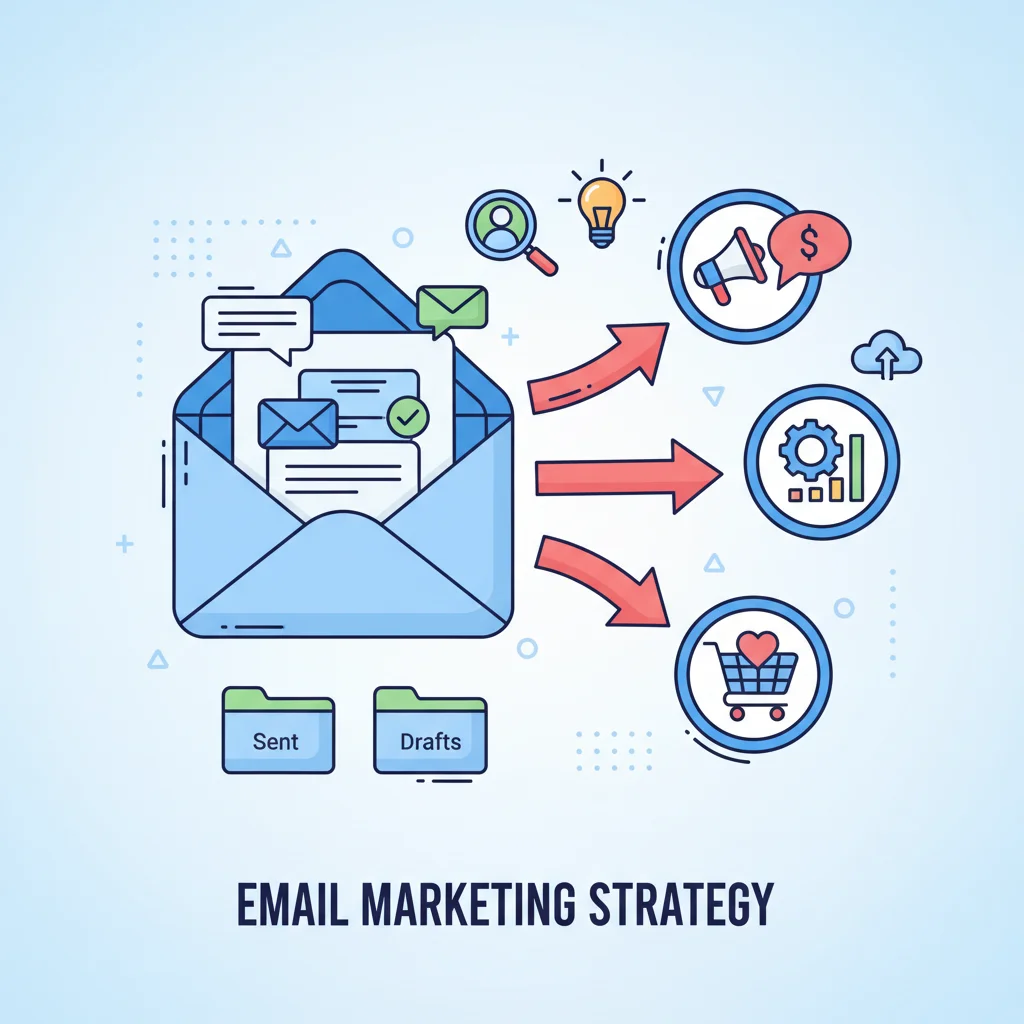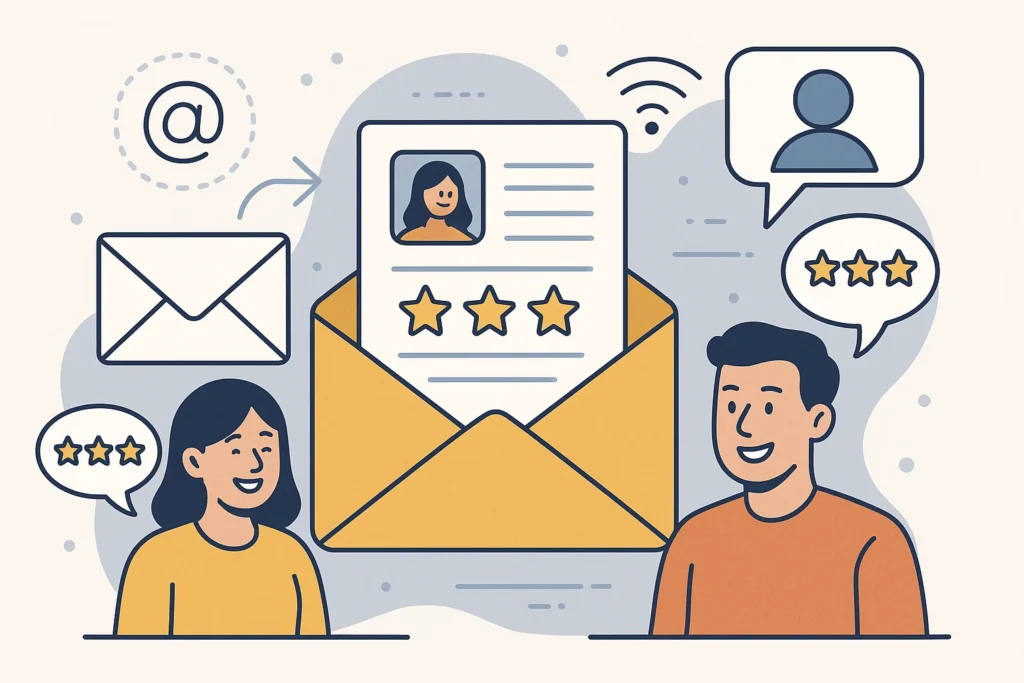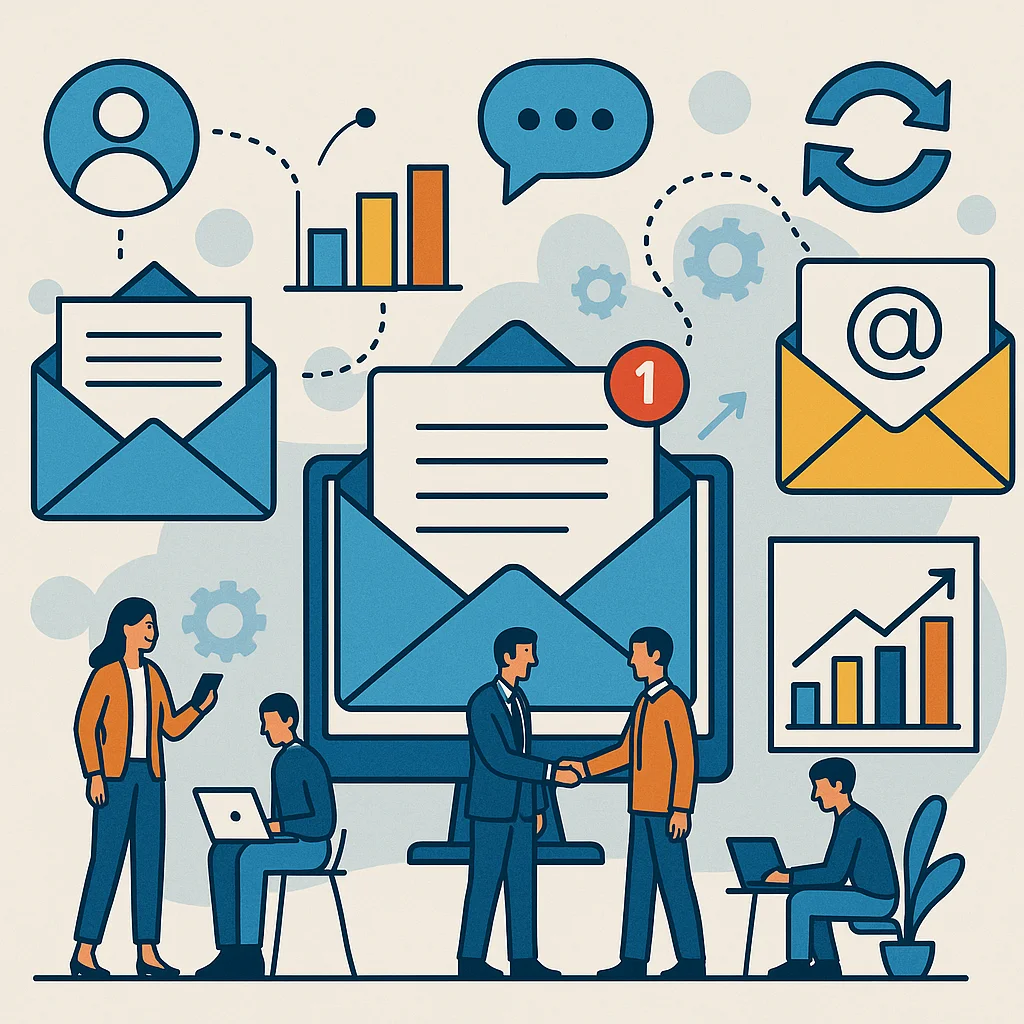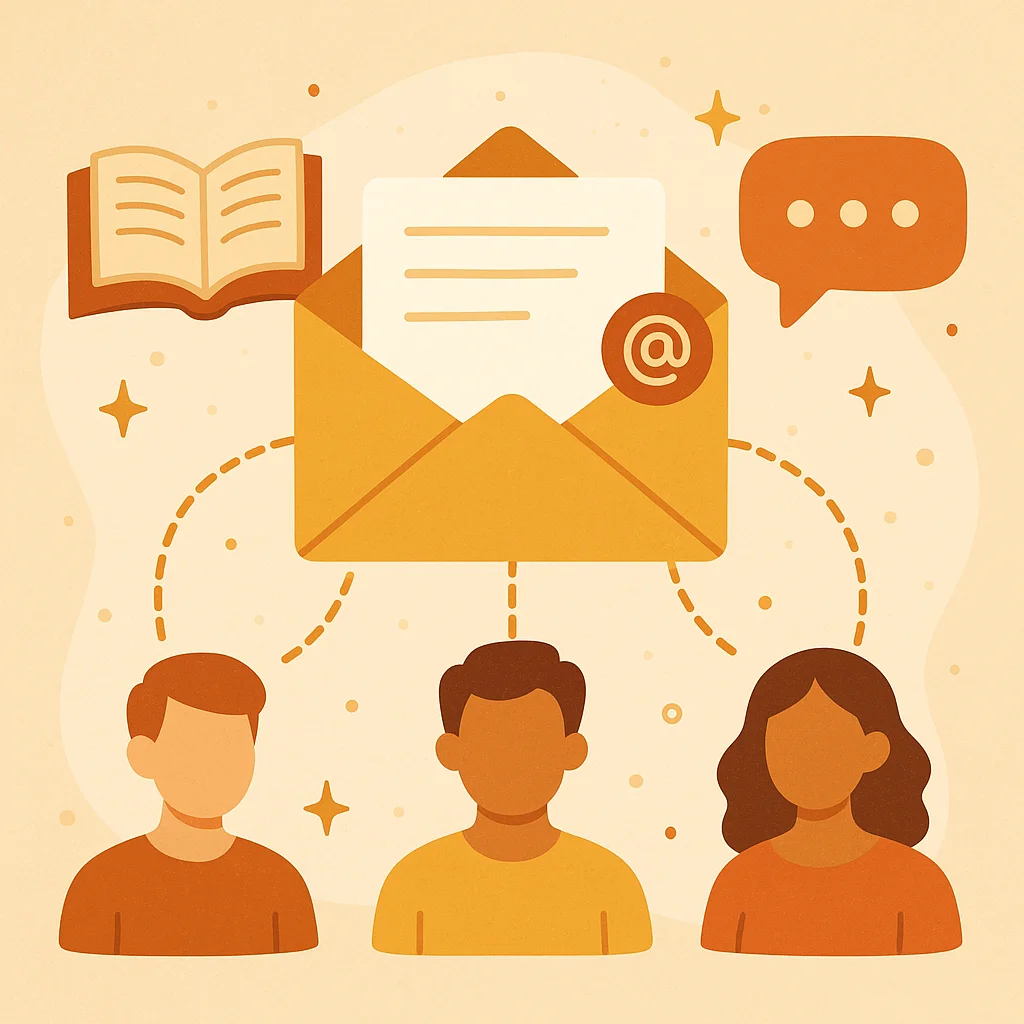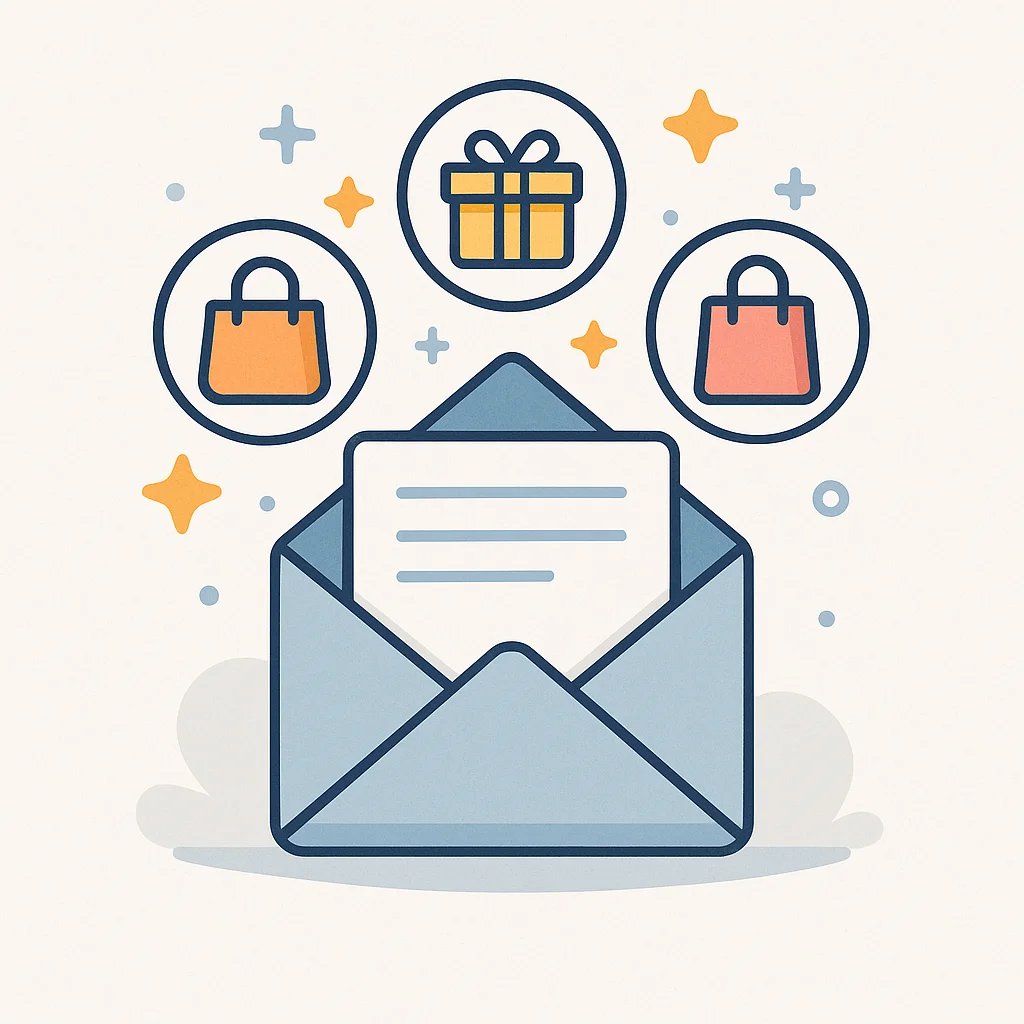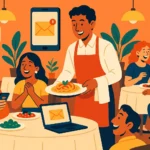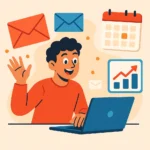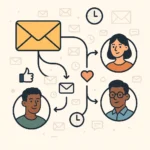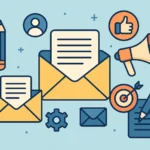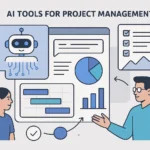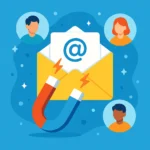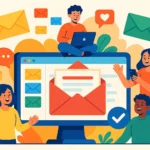Now Reading: Effective Non-Profit Email Campaign Secrets That Drive Donations
-
01
Effective Non-Profit Email Campaign Secrets That Drive Donations
Effective Non-Profit Email Campaign Secrets That Drive Donations
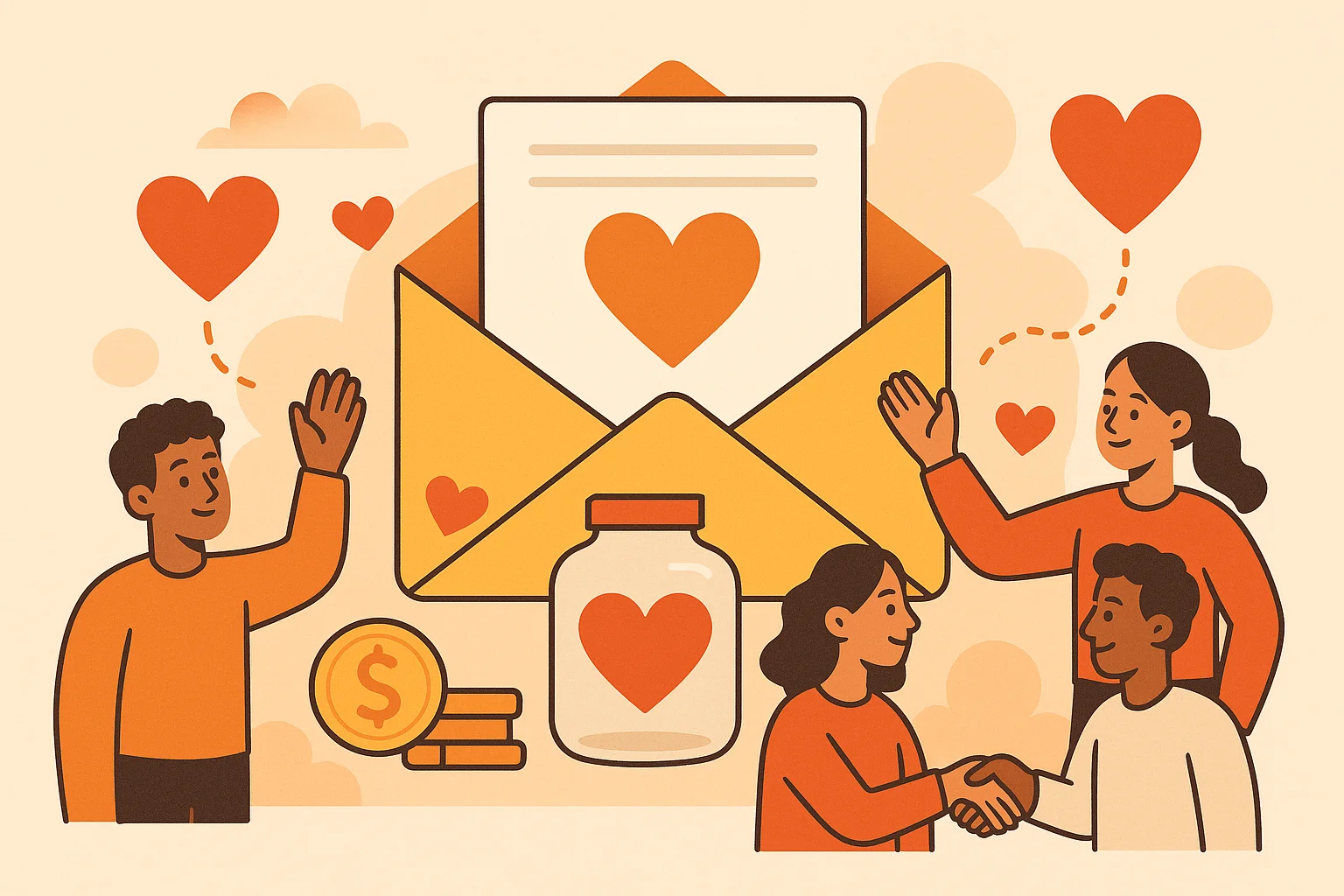
Most nonprofit emails end up in the digital graveyard we call the spam folder, and that’s costing organizations millions in lost donations. But some nonprofits are absolutely crushing it with their email campaigns, turning subscribers into passionate advocates and regular donors. The difference? They’ve mastered the art of creating an effective non-profit email campaign that speaks directly to people’s hearts and wallets.
Key Takeaways
Creating an effective non-profit email campaign requires strategic planning and execution across multiple elements. Here’s what you need to know:
- Build and segment your email list – Start with prominent sign-up forms and lead magnets, then divide subscribers based on donation history, engagement level, and interests for targeted messaging
- Craft compelling subject lines – Keep them 6-10 words long, use personalization with first names, and include powerful action verbs to achieve higher open rates
- Focus on storytelling over statistics – Share individual stories that create emotional connections rather than overwhelming readers with data and facts
- Include one clear call-to-action – Every email should have a single, prominent “Donate Now” or specific action button that stands out visually
- Optimize for mobile devices – With 50% of nonprofit emails opened on mobile, ensure responsive design and easy-to-click buttons
- Personalize content beyond names – Use segmentation to send relevant content based on subscriber behavior, location, and past engagement
- Send regular newsletters and updates – Keep supporters informed about your impact, upcoming events, and how their contributions make a difference
- Clean your email list regularly – Remove unengaged subscribers who haven’t opened emails in 6 months to improve deliverability and sender reputation
Building Your Foundation For Success
Let’s start with the basics – you can’t have an effective non-profit email campaign without a solid email list. But I’m not talking about buying some sketchy list from the internet (please don’t do that). I’m talking about building a list of people who actually care about your cause.
Growing Your Email List Organically
The best email subscribers are the ones who choose to hear from you. Place newsletter sign-up forms everywhere – your website homepage, blog posts, social media profiles, and event registration pages. Make it stupid easy for people to join your list.
Here’s a simple sign-up form template you can use:
Subject: Join Our Mission - Get Weekly Impact Updates
Hi there!
Want to stay connected with [Organization Name] and see the real impact of your support?
Join our email community to get:
- Weekly stories from the field
- Exclusive volunteer opportunities
- Early access to events
- Impact reports showing how donations help
[SIGN UP NOW - Button]
Questions? Reply to this email anytime.
Best,
[Your Name]
[Organization Name]Lead magnets work like crazy for nonprofits. Offer something valuable in exchange for email addresses – maybe a free guide related to your cause, an exclusive video, or early access to events. Environmental nonprofits might offer “10 Ways to Reduce Your Carbon Footprint,” while animal shelters could share “The Complete Guide to Pet Adoption.”
Don’t forget about offline opportunities. Bring a tablet to events and ask people to sign up right there. Face-to-face interactions often convert better than online forms because people can ask questions and feel more connected to your mission.
Segmentation That Actually Makes Sense
Here’s where most nonprofits drop the ball – they treat all subscribers the same. Big mistake. Your monthly donor doesn’t need the same message as someone who’s never given a penny.
Basic segments every nonprofit should have:
- First-time donors vs. recurring donors
- High-value donors vs. small donors
- Volunteers vs. non-volunteers
- Geographic location (especially for local events)
- Email engagement level (active vs. inactive)
Let me give you a real example. Say you’re running a food bank. Your recurring donors might get detailed impact reports showing exactly how their monthly contributions help. Meanwhile, your email subscribers who’ve never donated might receive more educational content about food insecurity in your community, building up to donation asks.
Useful Articles:
Crafting Subject Lines That Get Opened
Your subject line is like the front door to your email – if it’s not inviting, nobody’s coming in. Nonprofit emails have an average open rate of 25.17%, but the best organizations are hitting 40% or higher with killer subject lines.
The Magic Formula
Keep it short and sweet – 6 to 10 words is the sweet spot. Emails with subject lines in this range see open rates of 21%, while longer subject lines tank at under 10%.
Personalization is your secret weapon. Just adding someone’s first name can boost open rates by 22%. But don’t stop there – you can personalize based on location, donation history, or interests.
Here are some subject line templates that work:
[First Name], help us save 100 dogs this month
Your $25 just changed everything, [First Name]
[First Name], Congress votes tomorrow - we need you
This dog's story will break your heart, [First Name]
[First Name], you're invited to something specialPower verbs are your friend. Words like “fight,” “save,” “transform,” “protect,” and “rescue” create urgency and emotion. They make people feel like they’re part of something important.
What Not to Do
Avoid generic subject lines like “Newsletter #47” or “Monthly Update.” Nobody gets excited about those. Also, don’t use ALL CAPS or excessive punctuation marks (!!!) – they scream spam.
Never mislead people with your subject line. If your email is about fundraising, don’t pretend it’s just a newsletter. Trust is everything in nonprofit work, and misleading subject lines destroy it fast.
The Art of Nonprofit Storytelling
Here’s what separates good nonprofit emails from great ones: storytelling. People don’t donate to statistics – they donate to stories that make them feel something.
Focus on One Person, Not a Thousand
Instead of saying “We helped 1,000 families this year,” tell me about Maria, the single mom who couldn’t afford groceries until your food pantry stepped in. Make me see her face, understand her struggle, and feel the relief when she found help.
Here’s a storytelling email template:
Subject: Maria's grocery cart was empty - until yesterday
Hi [First Name],
Maria stood in the grocery store checkout line, watching the total climb higher than the $23 in her wallet.
As a single mom working two part-time jobs, she'd been here before. Choosing between rent and groceries. Between her daughter's school supplies and dinner.
Yesterday, everything changed.
Maria discovered our community food pantry, and for the first time in months, she filled her cart without counting every penny. Her 8-year-old daughter Sofia helped carry the bags, chattering excitedly about the fresh fruit they could finally afford.
"I felt human again," Maria told us. "Like I could actually take care of my family."
Your support makes moments like this possible. Every $25 donation provides a week's worth of groceries for a family like Maria's.
[DONATE NOW - Button]
Thank you for being part of Sofia's smile and Maria's relief.
With gratitude,
[Your Name]Show the Impact, Don’t Just Tell
People want to know their money makes a real difference. Instead of vague promises, show specific outcomes. “$50 provides school supplies for one child” is way better than “$50 helps our education program.”
Use before-and-after scenarios when possible. Show the problem, introduce your solution, and demonstrate the positive outcome. This creates a clear narrative arc that donors can follow and feel good about supporting.
Useful Articles:
Designing Emails That Convert
Your email design can make or break your campaign. I’m not talking about fancy graphics – I’m talking about clean, mobile-friendly layouts that guide readers toward your call-to-action.
Mobile-First Approach
Half of all nonprofit emails are opened on mobile devices, so if your email looks terrible on a phone, you’re losing donations. Use single-column layouts, large fonts (at least 14px), and buttons that are easy to tap with a thumb.
Your call-to-action button should be impossible to miss. Make it a contrasting color, use action-oriented text like “Donate Now” or “Help Save Lives,” and place it prominently in your email. Don’t bury it at the bottom after three paragraphs of text.
The 60/40 Rule
Aim for roughly 60% text and 40% images. Too much text overwhelms readers, but too many images can trigger spam filters. Use high-quality photos that directly relate to your cause – show the people, animals, or communities you’re helping.
Include your logo in the header and organization information in the footer. This builds trust and ensures people know who’s emailing them. Also add social media links so people can connect with you on other platforms.
Different Types of Nonprofit Email Campaigns
Not every email should ask for money. Effective non-profit email campaigns use a mix of different message types to build relationships and keep supporters engaged.
Welcome Series
When someone joins your email list, they’re most engaged and likely to take action. Don’t waste this opportunity with a boring “Thanks for subscribing” message.
Here’s a welcome email template:
Subject: Welcome to the [Organization Name] family!
Hi [First Name],
Welcome! I'm so excited you've joined our community of changemakers.
You're now part of a movement that's [specific impact - feeding hungry families, protecting endangered animals, etc.]. Over the next few days, I'll share some stories that show exactly how your support creates real change.
But first, I want you to meet [specific person/animal your organization has helped]. Here's their story...
[Brief story with photo]
This is the kind of impact we create together. And it's only possible because of supporters like you.
What's next? Here are three ways to get more involved:
1. Follow us on [social media links]
2. Sign up to volunteer [link]
3. Share our mission with friends [social sharing buttons]
Thanks for being here. I can't wait to show you the amazing things we'll accomplish together.
With gratitude,
[Your Name]
[Title]
[Organization Name]
P.S. Keep an eye on your inbox - I'll be sharing some incredible success stories this week that will show you exactly how your support changes lives.Fundraising Appeals
When you do ask for money, make it count. Be specific about what the donation will accomplish, create urgency, and make the ask early in the email.
Subject: [First Name], we have 48 hours to save these animals
Hi [First Name],
I'm writing with urgent news that couldn't wait.
The city just announced they're closing the overcrowded animal shelter on Friday. Without immediate action, 127 dogs and cats will be euthanized.
But we have a plan - and 48 hours to make it work.
We've partnered with three rescue organizations to find emergency foster homes for every single animal. The problem? We need $15,000 by Thursday night to cover medical exams, vaccinations, and transport costs.
Here's exactly what your donation provides:
- $25: Medical exam and vaccinations for one animal
- $50: One week of emergency foster care
- $100: Complete care package for a rescued pet
[DONATE NOW - Button]
I know this is short notice, but these animals are counting on us. Every dollar brings us closer to saving all 127 lives.
Can you help us reach our goal?
[DONATE NOW - Button]
Thank you for being the kind of person who steps up when animals need help most.
With hope,
[Your Name]
P.S. I'll send updates as we get closer to our goal. Together, we can make sure every single animal finds safety.Thank You and Impact Updates
Gratitude emails are some of the most important messages you’ll send. They have an 80% open rate – three times higher than regular campaigns.
Subject: You just changed everything for [specific person/animal]
Hi [First Name],
I had to write to you immediately.
Your donation just arrived, and I wanted you to see exactly what happened because of your generosity.
[Specific story about impact - include photo if possible]
This is what $[donation amount] looks like in real life. This is the difference you made today.
I know you probably donate to several causes, and you could have chosen anywhere to make a difference. The fact that you chose us means everything.
What's next? I'll keep you updated on [specific person/animal's] progress. And if you ever want to visit and see your impact firsthand, just let me know.
Thank you for being exactly the kind of person who makes miracles happen.
With deep gratitude,
[Your Name]
P.S. Your donation is tax-deductible. I'll send your receipt within 24 hours.Newsletter Content That Engages
Regular newsletters keep your organization top-of-mind between donation asks. But don’t make them boring update dumps.
Great newsletter content includes:
- Success stories from the field
- Behind-the-scenes looks at your work
- Volunteer spotlights
- Upcoming events and opportunities
- Tips related to your cause
- Photos showing your impact
Mix educational content with emotional stories. If you’re an environmental nonprofit, share both climate change tips and stories about communities you’ve helped. Keep people informed and inspired.
Useful Articles:
Advanced Personalization Strategies
Basic personalization starts with using someone’s first name, but you can go much deeper. Modern email platforms let you create dynamic content that changes based on subscriber data.
Behavioral Triggers
Set up automated emails based on subscriber actions. If someone visits your donation page but doesn’t complete the gift, send a follow-up email within 24 hours. If someone downloads a resource from your website, add them to a specialized email sequence.
Geographic personalization works great for nonprofits with local chapters or events. Someone in Chicago doesn’t need to hear about your Los Angeles volunteer opportunity, but they’d love to know about local ways to get involved.
Donation History Segmentation
Treat your major donors differently than your $10 contributors. Both are valuable, but they need different messaging. Major donors might appreciate detailed financial reports and exclusive updates, while smaller donors might prefer simple impact stories and easy ways to increase their involvement.
Create different email tracks based on giving patterns:
- Monthly recurring donors
- Annual donors
- Event-based donors
- Lapsed donors (haven’t given in 12+ months)
- First-time donors
Email Automation That Works
Don’t try to manually send every email. Smart automation saves time and ensures consistent communication with your supporters.
Essential Automated Sequences
Welcome series: 3-5 emails sent over the first two weeks after someone subscribes. Introduce your mission, share impact stories, and gradually build toward donation opportunities.
Donor nurture sequence: Triggered after someone makes their first donation. Thank them, show impact, and invite deeper engagement through volunteering or monthly giving.
Re-engagement campaign: For subscribers who haven’t opened emails in 3-6 months. Send 2-3 emails trying to win them back, then remove non-responders to keep your list clean.
Birthday emails: If you collect birth dates, send personalized birthday messages with special offers or impact updates. People love feeling remembered on their special day.
List Hygiene and Deliverability
This isn’t the sexy part of email marketing, but it’s crucial. Bad list hygiene can tank your deliverability and cost you thousands in lost donations.
Clean Your List Regularly
Remove subscribers who haven’t opened or clicked an email in six months. I know it feels wrong to delete people, but unengaged subscribers hurt your sender reputation and make it more likely that your emails end up in spam folders.
Before removing people, send a re-engagement campaign:
Subject: [First Name], are you still with us?
Hi [First Name],
I noticed you haven't opened our emails lately, and I wanted to check in.
Maybe our messages aren't hitting the mark, or perhaps your interests have changed. That's totally okay - I just want to make sure you're getting value from our communications.
If you'd like to stay connected, click here: [STAY SUBSCRIBED - Button]
If you'd prefer to hear from us less often, you can update your preferences: [UPDATE PREFERENCES - Link]
And if it's time to part ways, no hard feelings - you can unsubscribe here: [UNSUBSCRIBE - Link]
Thanks for being part of our community, even if it's time to say goodbye.
Best wishes,
[Your Name]Avoid Spam Filters
Use a recognizable sender name that includes your organization. “Sarah from Animal Rescue League” works better than just “Animal Rescue League” or a generic email address.
Don’t use spam trigger words like “FREE!!!” or “URGENT!!!” in subject lines. Write naturally and focus on your message rather than trying to game the system.
Always include your physical address in email footers and make it easy for people to unsubscribe. This isn’t just good practice – it’s required by law.
Testing and Optimization
The best nonprofit email marketers are constantly testing and improving their campaigns. Small changes can lead to big improvements in donations and engagement.
A/B Testing Basics
Test one element at a time so you know what’s actually making the difference. Good things to test include:
- Subject lines
- Send times and days
- Call-to-action button colors and text
- Email length
- Images vs. no images
- Personalization approaches
Start with subject line testing since it has the biggest impact on open rates. Send the same email to two small segments with different subject lines, then send the winner to the rest of your list.
Key Metrics to Track
Open rates tell you if your subject lines are working. Nonprofit average is 25.17%, but aim higher.
Click-through rates show if your content is engaging. Average for nonprofits is 2.6%, but the best organizations see 5% or higher.
Conversion rates are what really matter – how many people take your desired action (donate, volunteer, etc.).
Unsubscribe rates should stay below 0.5%. If they’re higher, you might be emailing too frequently or your content isn’t relevant.
Don’t obsess over vanity metrics. A smaller, engaged list that donates regularly is way better than a huge list of people who never open your emails.
Creating an effective non-profit email campaign isn’t about having the fanciest design or the biggest list – it’s about building genuine relationships with people who care about your cause. Focus on telling compelling stories, making clear asks, and showing real impact, and you’ll see your email campaigns transform from inbox clutter into powerful fundraising tools that drive real change.


